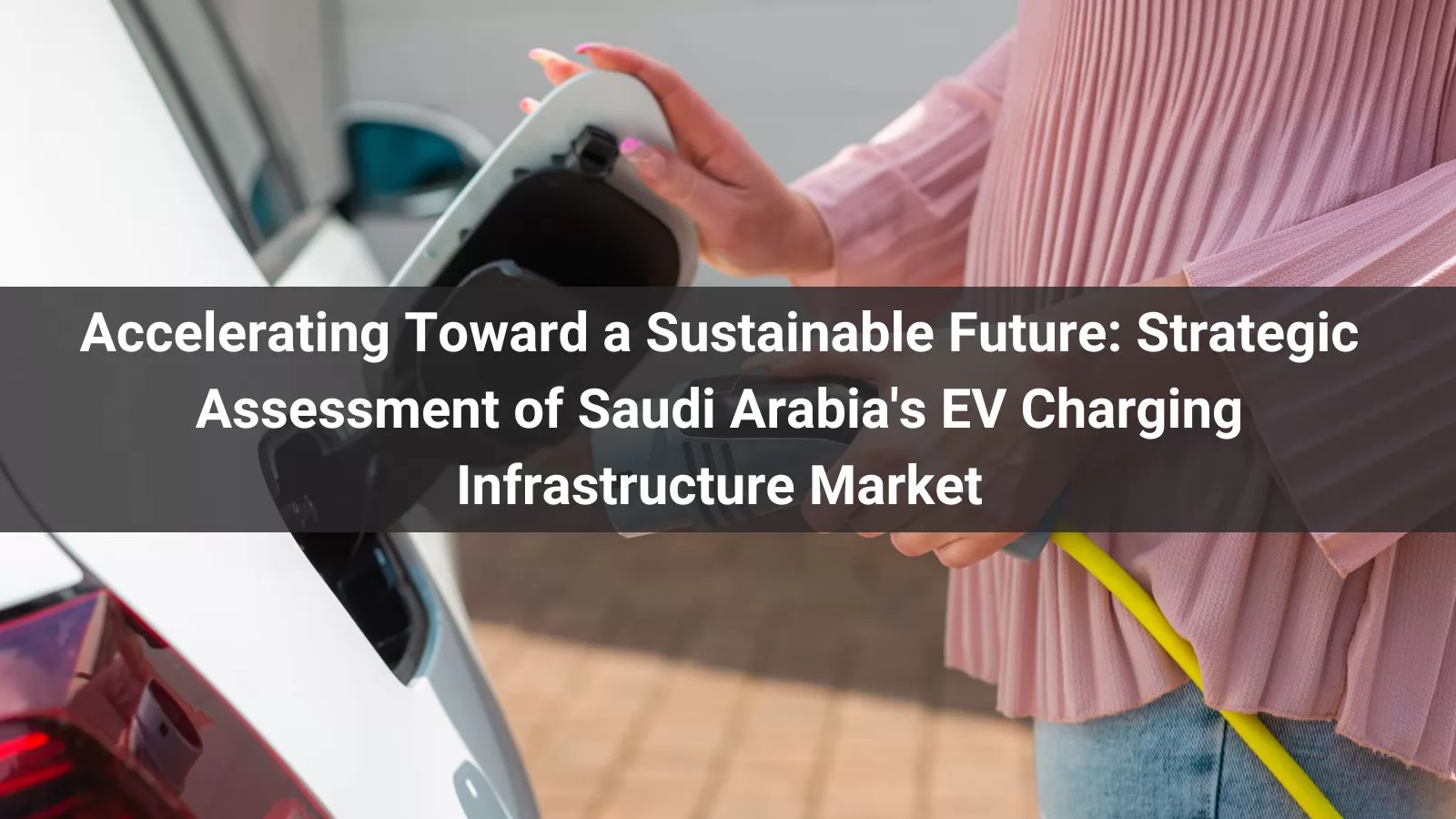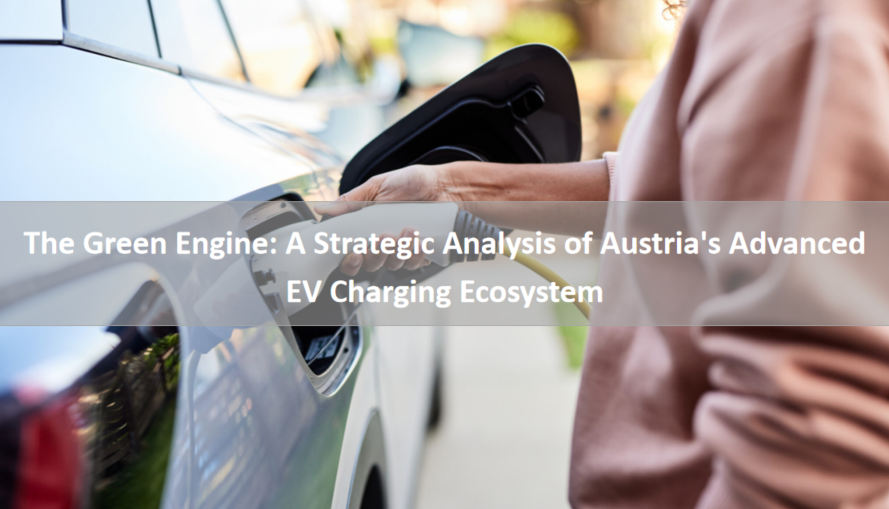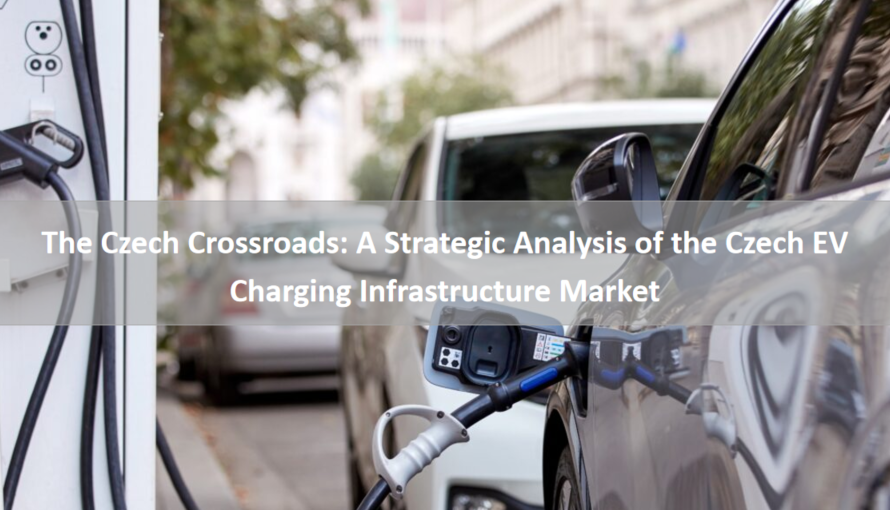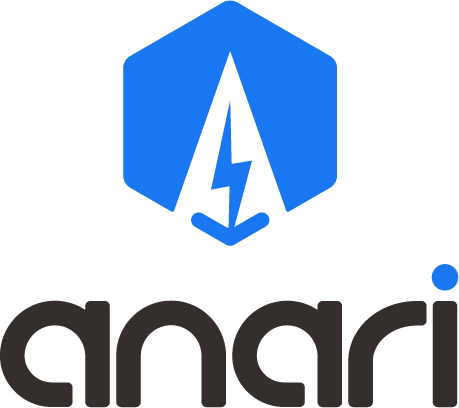
Executive Summary
As part of its Vision 2030 framework, Saudi Arabia is diversifying its economy from hydrocarbons and advancing an energy transition agenda. Electrification of transportation, including passenger vehicles, logistics fleets, and public transport, is a key focus. The kingdom aims to become a regional leader in electric vehicle (EV) adoption and manufacturing, supported by megaprojects, industrial investments, and regulatory reforms. While the EV charging ecosystem is developing through public-private partnerships and sovereign backing, it remains in early stages, with limited geographical spread, centralized deployment, and reliance on international expertise.
Key Findings
-
Government policy, driven by Vision 2030 and the Saudi Green Initiative, strongly supports sustainability and vehicle electrification.
-
EV charging infrastructure is growing but concentrated in Riyadh, Jeddah, and NEOM.
-
The market is small yet poised for rapid growth by 2030, fueled by local EV production (e.g., Lucid Motors).
-
Opportunities lie in fast-charging infrastructure, grid-renewable integration, and localized manufacturing, but challenges include grid capacity, harsh climate, and regulatory fragmentation.
1. National Policies and Regulatory Framework
1.1 Policy Landscape Driving Electric Mobility
Saudi Arabia employs a government-led approach to EV development, anchored in national strategies:
-
Vision 2030: Targets economic diversification and sustainability, with clean mobility as a key pillar under “Livability” and “Energy Transition” goals.
-
Saudi Green Initiative (SGI): Launched in 2021, aims for a 278 MtCO₂e reduction by 2030, targeting 30% of Riyadh’s cars to be electric by 2030.
-
Public Investment Fund (PIF) Strategy: Supports EV growth through investments like a majority stake in Lucid Motors and a $3.4 billion manufacturing plant in King Abdullah Economic City (KAEC).
-
Ministry of Transport and Logistic Services (MTLS): Drafting EV infrastructure deployment plans aligned with decarbonization targets.
1.2 Regulatory Developments
-
Saudi Standards, Metrology and Quality Organization (SASO): Issued technical standards for EV chargers and plug types in 2023, aligned with IEC norms.
-
Electricity and Co-Generation Regulatory Authority (ECRA): Developing grid connection standards and power pricing for charging stations.
-
Customs and Incentives:
-
Temporary exemptions on import duties for EVs and components.
-
No confirmed tax rebates or end-user subsidies as of 2025, with regulatory consultations ongoing.
2. Market Size and Growth Potential
2.1 Current Market Baseline
-
Total Vehicle Population (2025): ~15 million.
-
EV Penetration Rate: <1%, or ~70,000 vehicles.
-
Charging Infrastructure: ~1,200 public chargers, mostly in Riyadh, Jeddah, and NEOM.
-
Annual EV Sales (2023): ~9,000 units (imports and Lucid trial rollouts).
2.2 Forecasted Growth Trajectory
-
Government Mandates: Riyadh’s 30% EV target by 2030 implies over 100,000 EVs in the capital.
-
Local Manufacturing: Lucid’s KAEC plant targets 155,000 units/year by 2026; Ceer Motors (PIF–Foxconn JV) aims for 170,000 units/year.
-
Charger Growth Projection:
-
2030 Target: >50,000 public chargers.
-
CAGR (2025–2030): ~60%.
2.3 Pricing and Business Model Considerations
-
Electricity Cost: ~$0.04/kWh (subsidized), enabling favorable EV operating margins.
-
Charger Pricing Models: Early-stage, with most chargers offering free charging or bundled into real estate offerings (e.g., malls, hotels).
3. Development Status of EV Charging Infrastructure
3.1 Infrastructure Rollout
-
Geographic Concentration: 80% of chargers in Riyadh, Jeddah, and NEOM; emerging deployments in Dammam along the Eastern Corridor.
-
Charger Types:
-
AC Level 2 (7–22 kW): 70% of the network.
-
DC Fast Charging (>50 kW): Growing in NEOM and KAEC.
-
Ultra-Fast Charging (≥150 kW): Limited to flagship installations by Lucid and Tesla.
-
Key Deployment Sites: Shopping malls, luxury hotels, corporate campuses, government buildings, and EV showrooms.
3.2 Stakeholder Ecosystem
-
Government: PIF, SASO, ECRA, and the Ministry of Municipal and Rural Affairs lead standard-setting and urban planning integration.
-
Private Sector:
-
Lucid Motors: Deploying high-speed chargers for KAEC-produced vehicles.
-
Ceer Motors: Planning an integrated charging network.
-
ABB, Siemens, Schneider Electric: Supplying imported fast-charging hardware.
-
Utilities: Saudi Electricity Company (SEC) partners with municipalities on grid integration.
-
Foreign Participation: Chinese, European, and U.S. firms active in equipment provision and joint ventures.
4. Opportunities and Challenges
4.1 Opportunities
a. Public and Fleet Electrification
-
Government fleets, logistics, and public transport are ideal early adopters, with vehicle depots and highways offering high ROI potential.
b. Green Megaproject Integration
-
NEOM, Red Sea Global, and The Line serve as testbeds for high-speed, solar-powered charging infrastructure.
c. Ultra-Fast Charging
-
Premium EVs (e.g., Lucid, Tesla) demand 150–350 kW chargers, creating opportunities for advanced infrastructure providers.
d. Local Manufacturing & Value Chain Development
-
PIF’s localization push supports domestic production of chargers, inverters, cables, and software around KAEC and NEOM.
e. Smart Grid Integration
-
Digitized grid enables Vehicle-to-Grid (V2G) and demand-response systems for flexible charging.
4.2 Challenges
a. Low Ambient Demand
-
EVs remain luxury products; without subsidies or affordable models, mass adoption is uncertain.
b. High Ambient Temperatures
-
Summer temperatures >45°C challenge charger durability, vehicle range, and cooling needs.
c. Regulatory Fragmentation
-
Overlapping oversight by SASO, ECRA, MTLS, and municipalities causes approval delays.
d. Grid Strain Risks
-
Local distribution networks may need upgrades to support fast-charging loads in older urban areas.
e. Limited Software and Interoperability
-
Proprietary payment systems and fragmented standards limit seamless charging experiences.
Strategic Recommendations
To achieve EV charging scalability:
-
Establish a Unified EV Infrastructure Authority: Consolidate SASO, ECRA, and MTLS roles into a single body for planning, standards, and compliance.
-
Develop a National Charging Master Plan: Define geographic coverage, interoperability, and grid impact thresholds.
-
Launch a Fast-Track Incentive Program:
-
Offer CAPEX subsidies or tax holidays for private developers.
-
Provide electricity tariff guarantees for high-use public chargers.
-
Support Domestic Manufacturing:
-
Extend industrial zones for charger assembly and testing.
-
Facilitate tech transfer with global OEMs for hardware and software.
-
Implement Climate-Resilient Infrastructure Design:
-
Mandate temperature-resilient charger enclosures and cooling systems.
-
Encourage solar canopies and battery-buffered chargers.
Conclusion
Saudi Arabia is well-positioned to lead the Middle East in EV infrastructure, backed by sovereign capital, industrial ambition, and low energy costs. A coordinated approach aligning policy, regulation, investment, and localization can transform pilot programs into a smart, national charging ecosystem, greening transport and establishing a global competitive advantage in the energy transition.
Read more:
10 Best DC Fast Chargers 2025
Top 10 EV Charging Companies in the World 2025
Top 10 DC EV Charger Companies in China 2025








